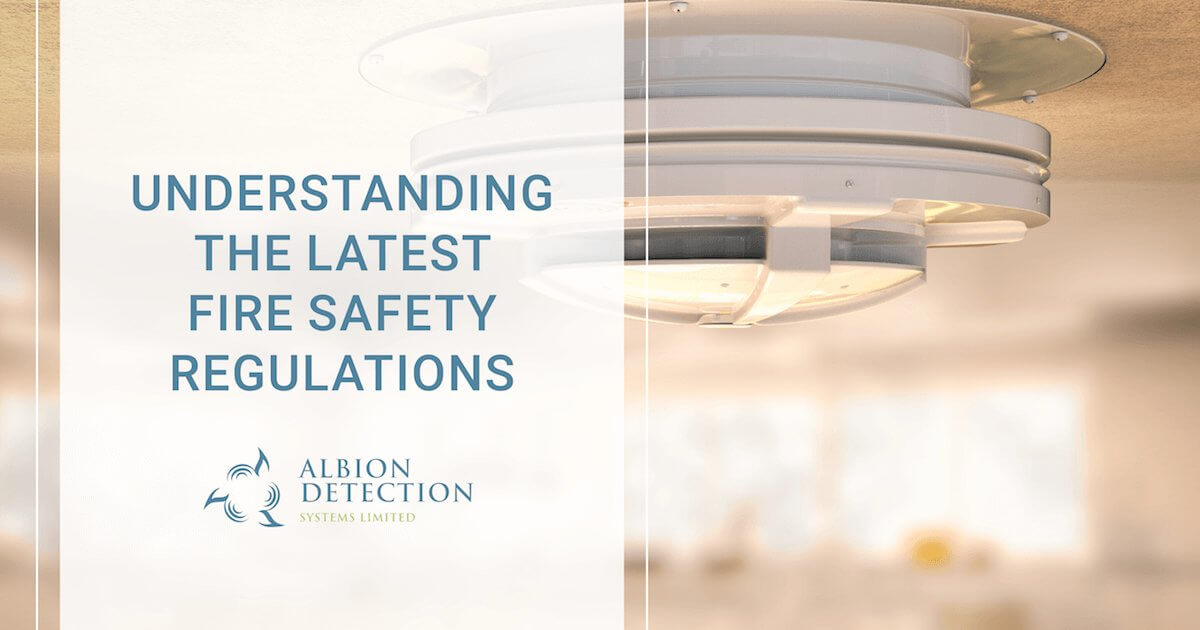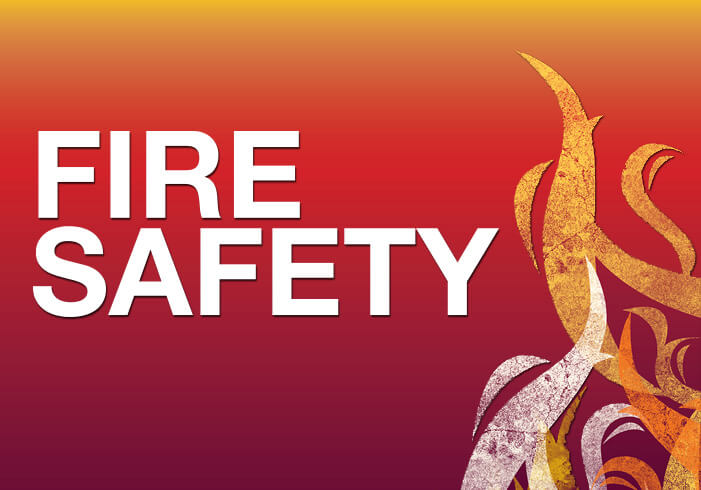
Understanding The Latest Fire Safety Regulations – Albion Detection Systems
If you own or run a business, the law requires that you be aware of current fire safety regulations for commercial and business premises.
Not only can the failure to adhere to fire regulations lead to prosecution, negligence or naivety when it comes to fire safety can also seriously undermine the well-being and safety of your staff, your customers and your business premises.
Having a keen understanding of the how what and where of your own fire safety is an absolute must.
In this article, we’ll look at where responsibility lies and the basics of fire safety regulation as set out in current UK law.
This will help you stay on top of the (sometimes complex) business of fire safety protection.
Fire Safety For Businesses
There is a world of difference between the strictures of fire safety for domestic dwellings, and the necessary fire safety regulations for companies.
Your responsibilities as a business owner run much deeper than arranging fire alarm installation.
The latest updates to fire safety regulation for commercial entities is outlined in The Regulatory Reform 2005, which covers rules and regulations for England and Wales.
These rules are in place to protect staff and other visitors to your commercial premises, in addition to helping to safeguard any assets and the building itself.
They are vital to limiting damage should the worst occur.

Who’s Responsible For Fire Safety?
Whilst you can (and should) train all your staff on what to do in an emergency including imparting the basics of fire safety guidance such as what to do in a fire drill.
The ultimate responsibility for averting fires and initiating fire safety procedure in the event of fire falls to your designated responsible person.
This is most commonly the business owner, employer or manager of either the company or facilities.
The role is a vitally important one, and carries a heavy burden of responsibility, as this is who will be held accountable in the event of a disaster.
In some instances, particularly within larger companies, there may be more than one responsible person.
Or the responsible person may select a ‘competent person’ to help them with vital tasks such as identifying risks.
The duties of the responsible person(s), include:
Fire Risk Assessments
To be carried out on a regular basis and reviewed at regular intervals, your fire risk assessment is one of the most important things you can do to help safeguard your company against both contravening UK law and suffering a fire-related incident.
The purpose of the risk assessment is to gather information on all potential threats to both life and property, before suggesting and implementing ways in which these threats can be reduced to acceptable levels including via the installation of fire protection systems.
The degree of fire risk and therefore level of fire protection needed varies significantly depending upon the materials that a company encounters, or the number of personnel, and even the design of the building.
Therefore your fire safety checklist and risk assessment must be unique to your individual place of business.
It’s an in-depth process, during which your risk assessment will have to consider factors such as:
- Where risk factors are, and how they can be reduced.
- Who would be at risk, should the worst happen.
- How to alleviate these risks and ensure adequate fire safety protection and a fire-safety drill is in place.
There are serious penalties which can result from failing to keep an up-to-date fire risk assessment document.
Your staff must be kept regularly updated on any new developments or procedures which your assessment has helped to prescribe.
Fire Safety Equipment
Each premise needs different types of equipment, depending on its size and sector.
However, some of the most popular ways of preventing and fighting fire include methods such as:
- Installation of fire detection systems, including a fire alarm. Having fire detection and warning systems in place is a legal requirement for all businesses
- Firefighting equipment such as fire extinguishers – though again the type of equipment you need will vary depending on the business type and location
- All your equipment must be properly installed
- Adherence to fire door regulations, regular system maintenance and adherence to fire safety legislation
Testing And Maintenance
It’s essential that your firefighting kit is regularly tested to ensure all systems are functioning.
This includes not only regular testing of fire alarms and fire extinguishers but also, additional elements such as your emergency lighting system.
By checking all emergency exit points from the building are kept clear and easily openable, as well as fire doors properly closed is good practice.
The escape route from your fire assessment is a crucial part of your testing and maintenance.
It should be checked, alongside every element of your fire safety and firefighting equipment, on a weekly basis.
Be sure to keep accurate records of each check and pay particular attention to:
- Fire exit signs – location and direction must be accurate
- Fire alarm systems – to remain functional and regularly tested
- Emergency lighting – must be effective and functional
Fire Drills & Staff Training
Staying on the right side of fire safety regulation doesn’t stop with the equipment you use and install, but should also extend to your staff.
Taking clear but simple steps, such as ensuring all members of staff are provided with basic fire safety training and understand your fire drill is part of your fire safety responsibilities as a business owner.
Fire safety regulation also requires you to conduct regular fire drills and train the appropriate members of staff in using any fire-fighting equipment you have on site.
By law, you must carry out at least one fire drill each year and keep the results stored as part of your wider fire safety and evacuation plan.
Additional Fire-Prevention Methods
Your firefighting equipment must be accompanied by signs to ensure staff are able to use them in the event of an emergency.
Placing the right signs and symbols where appropriate, including the fire action notice sign and the fire extinguisher ID sign, can help to deter potentially hazardous activities.
They can also alert anyone in the building to exactly the right steps to take should the worst occur.
Logging Fire Safety
Your Fire Safety Log Book is the place for you to record all fire protection information, including records of testing and measures which you have put in place.
This helps you to keep on top of your company’s fire safety, and will also ensure you adhere to the latest strictures of fire safety regulation.
Want to Learn more about Fire Regulations?
To ensure you’re doing all you can to remain compliant and protect your business and its staff in the event of a fire, Download our FREE Fire System Audit Checklist for business owners(p) to get the inside track on where to start,
Or contact us to find out more, or book your free no obligation Fire Protection Consultation
Make sure your business is equipped to handle its fire safety obligations by downloading our free fire protection guide now



